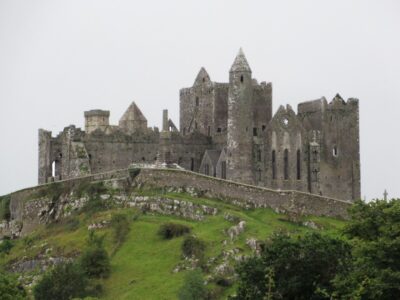This month, our ‘Christian Heritage month by month’ column presents you the Rock of Cashel in the Archdiocese of Cashel and Emly, Ireland. The site posses the most impressive cluster of medieval building in Ireland. Among them figure a round tower, a high cross, a Romanesque chapel, a Gothic cathedral, an abbey, the Hall of the Vicars Choral and a fifteenth-century Tower House. Click here for more info

The Rock of Cashel (Ireland), features the ruins of a Gothic cathedral and a 12th century round tower. (Photo: David Stanley)
The complex is historically significant, since it used to be the seat of the kings of Munster. According to legend, St. Patrick came to the Rock to convert King Aenghus to Christianity. After Cashel’s fame spread, being declared seat of the High King, in 1101 the site was granted to the Church and the town became one of the most important centres of ecclesiastical power.
The Rock’s two main buildings are different in architecture, yet share a common history. Cormac’s Chapel was built around 1130 by the King of Desmond in Romanesque style, which had reached Ireland from continental Europe. The church contains the earliest and only surviving Romanesque frescoes in Ireland, representing scenes from the early life of Christ. Although much has been lost, due to deterioration caused by environmental factors, the fragmentary wall paintings represent one of the unique examples of mural painting on the island.
The adjacent St Patrick’s Cathedral, built between 1235 and 1270 in Gothic style, contrasts with Cormac’s chapel, due to its tall features and pointed archways. Sacked in 1647 and later deprived of its main roof following the arrival of English Parlamentarian troops, the Cathedral was the seat of the clergy and a centre of attraction for many faithful across Ireland.
The Rock of Cashel, with its meaningful history, is a powerful symbol of Christianity in Ireland and a living testimony of the coexistence of different architectural styles, mirroring the diversity and unity of European arts.

